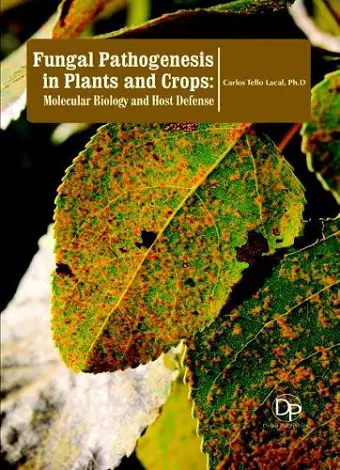Fungal Pathogenesis in Plants and Crops
Molecular Biology and Host Defense
Format:Hardback
Publisher:Delve Publishing
Published:30th Nov '16
Should be back in stock very soon

Fungal pathogens constitute one of the major threats to global crop production, with an estimated annual yield loss of 15% being attributed to them. The main strategies employed by farmers to prevent, reduce or fight fungal infection range from the use of resistant crop cultivars to the treatment with fungicides or the establishment of crop rotation practices. The life cycles and infectious strategies of the main crop fungal pathogens, as well as the mechanisms triggered by plants in response to these pathogenic agents, emerge as essential areas of study requiring furhter investigation in order to optimize fungal fight practices. In this book, a wide range of peer-reviewed research papers fully covering the above-mentioned topics have been compiled.
The first chapter describes the cell wall, the initial barrier fungal pathogens need to overcome in order to colonize their host, particularly how modifications in its composition influence plant resistance to infection. Chapter 2 provides an overview of the different signaling pathways triggered in response to plant cell wall wounding, since wounded tissue constitutes an important way of entry into the plant employed by pathogens. The main features of the infection process by fungi and oomycetes in terms of gene ontology are reviewed in Chapter 3. Chapter 4 discusses the roles of the effectors released by biotrophic and hemibiotrophic fungal pathogens in the infectious process and the mechanisms enabling their release by fungi and uptake by plant hosts. The functioning of the complex plant-pathogen recognition process is illustrated in Chapter 5 by studying the case of tomato Cf-2-mediated resistance against leaf moulds. The process continues to be described in Chapter 6, where the differences between host and non-host resistance mechanisms are presented. Plants react against the presence of fungal pathogens by producing a plethora of compounds with antifungal activity, such as reactive oxygen species, secondary metabolites, proteases and phytoalexins, whose roles in fungal fight are reviewed in Chapters 7 to 10. Chapter 11 investigates the effects of the main phytohormones in shaping the plant-pathogen interaction by depicting the example of the soil fungus Fusarium oxysporum. Going back to the infectious process, Chapter 12 examines the use of plant nutrient supply by the growing phytopathogenic fungi. In Chapter 13, the control by plants of the programmed cell death...
ISBN: 9781680958980
Dimensions: unknown
Weight: unknown
304 pages